If you are a service business with outstanding accounts receivable, it may be time to consider changing the way you do business. When I was very young, customers could order products using the cash-on-delivery (COD) method, where they would pay for the product upon delivery. Imagine a company producing a product, paying the cost of shipping and carrying the risk of not getting paid up until the last minute. However, the American consumer has evolved, and with the rise of e-commerce and online shopping, they have become accustomed to pre-paying for goods and services. You might want to say they have been Amazonified.
This shift in customer behavior has led many service providers to adopt new billing practices. For instance, my lawn care company (and the one before my current one) works on a retainer basis where I pay upfront, and the cost of weekly service is deducted from my account as the month progresses. This approach has enabled this business to effectively have negative accounts receivable, which in turn helps improve their cash flow.
I just paid my web developer ½ down and ½ on completion. But what if he asked for 100% upfront? He would have got it.
Sometimes you will get pushback from customers. When that is the case you need to evaluate the situation. Sometimes the transaction is a large part of their net worth, or large enough that it is outside of their comfort zone. That can cause fear to set in. Sometimes they don’t know you well enough. Sometimes they’ve been burned before. Other times they’re intending to back out of the transaction or not pay. People that are untrustworthy, also don’t trust others. They think everyone is like them. Sometimes people unwilling to pay you up front and you losing the sale can be a blessing in disguise.
Even commercial accounts are run by individuals in the purchasing department, who are also used to pre-paying for goods and services at home. It is not impossible to see prepaid services if you are in a commercial services business. I had a friend who won a million-dollar job, which was larger than his typical job. He went about reaching out to his subcontractors to see if he could get payment terms extended. But then something amazing happened. The company called him to get routing details for the deposit. He had left payment terms of ½ down, ½ on completion that he normally used for small residential jobs on this big commercial contract. The company didn’t question the terms, though. They asked where to send the payment!
Quite a few years back, I was training a salesman. I told him to collect 10% down to schedule and 90% would be collected after completion. But he misunderstood me. He was collecting 90% to schedule and with 10% due on completion. And guess what, he didn’t get any pushback from customers. He got it from me though. It felt wrong. It wasn’t the way we do business. If I wasn’t wearing too many hats or wasn’t so busy that I had time to think I might have come to the conclusion that collecting 90% deposits was a great idea, but at the time it didn’t even occur to me to contemplate what that would mean for my business. If this sounds like you, it might be time to offload some responsibilities. Book a discovery call with us today and see how we can lighten your load and leave you some margin in your life to work on the high level business planning decisions that will lead to real business growth.
Small businesses need to rethink their billing practices to leave themselves in the best financial position. By being creative and willing to ask for payment upfront, businesses can reduce their accounts receivable and improve their cash flow.
Even in industries like construction, where the financing has historically been part of the product, businesses can get creative in their payment terms to increase cash flow. Maybe try offering a discount for prepayment. Or instead of payment terms of 30 days, payment terms can be payable on completion, or due on receipt.
If you don’t like the discount for prepayment idea what about other benefits you might be able to give to a customer that decides to prepay? What about priority scheduling or a free gift? You just need to apply it to your current industry/company. Small changes can add up in big ways with simple tweaks. And who couldn’t use more cash flow?
I hope this blog helps you to rethink your accounts receivable philosophy and improves the way you manage your cashflow. If you found it helpful I invite you to subscribe so you won’t miss any of our content.




